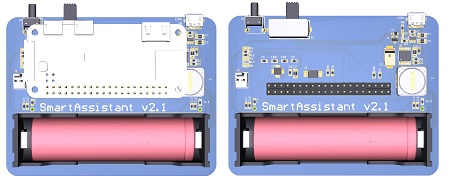SmartHome Assistant
The Smart Assistant provides the voice input/output command module for the occupants of the SmartHome. "Hugo" as she prefers to be called, uses a combination of online speech recognition and synthesis toolkits and offline machine learning techniques to understand your query and appropriately respond.
Feature OverviewThrough integration with the SmartHome Server, Hugo will be able to respond to any query that you may have about your SmartHome, even without an active Internet connection. This could be anything from the temperature in a particular room, to the depth of water in your pool, to the location of your housemates. Once Hugo is connected to the Internet, she can become your personal Google search engine, directing any non-SmartHome related queries to the world wide web.
Technical OverviewThere are two main types of Smart Assistant devices: the server and the clients. Both can be battery operated for a maximum of eight hours or powered directly from AC. The client modules can be distributed throughout the SmartHome and connect to the Smart Assistant server, which in turn connects to the SmartHome server. They are solely responsible for recording the query, transmitting the query to the server, and voicing the server’s response. The server contains the brains of the Smart Assistant, housing the speech-to-text (STT), natural language processing (NLP), and text-to-speech (TTS) capabilities.

This project is being undertaken by UQ ITEE student Kieran Sonter under the supervision of Dr Alex Pudmenzky.